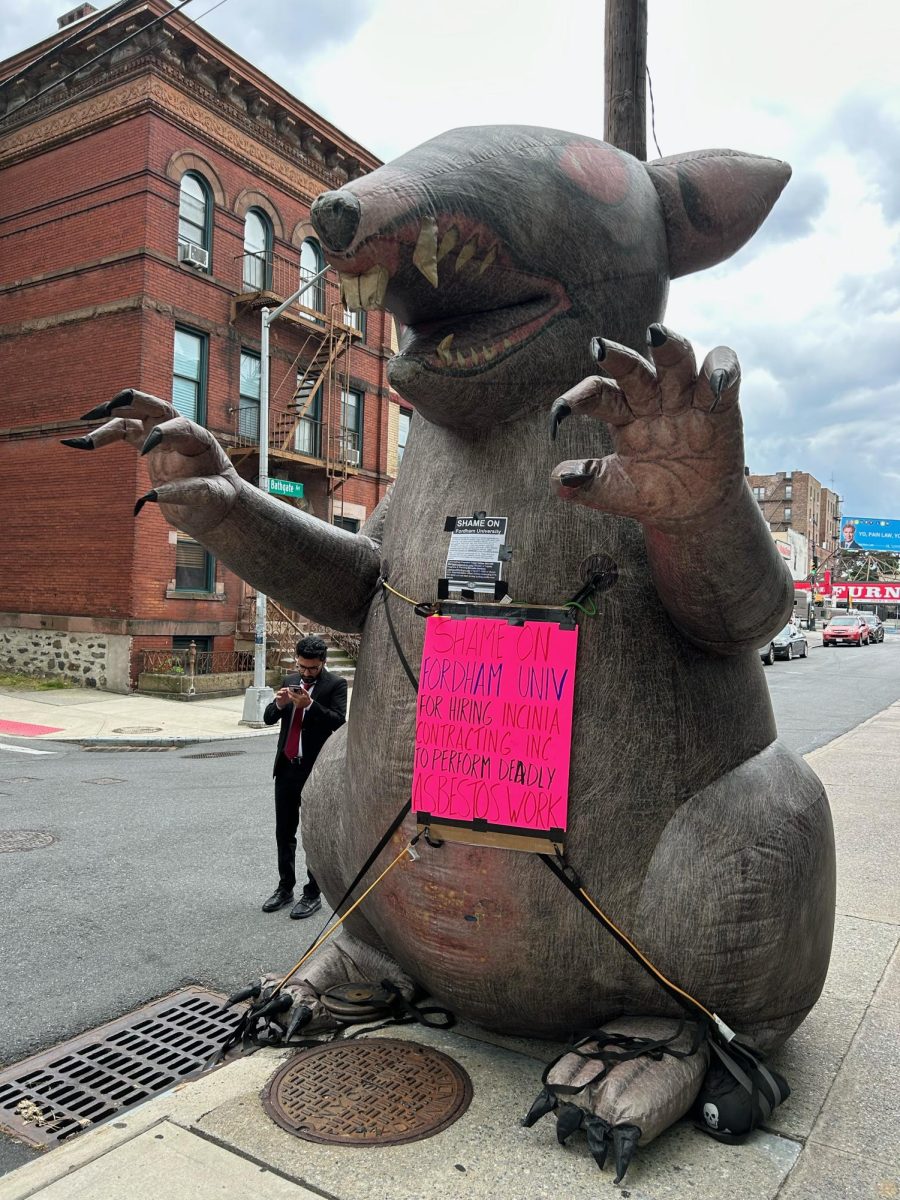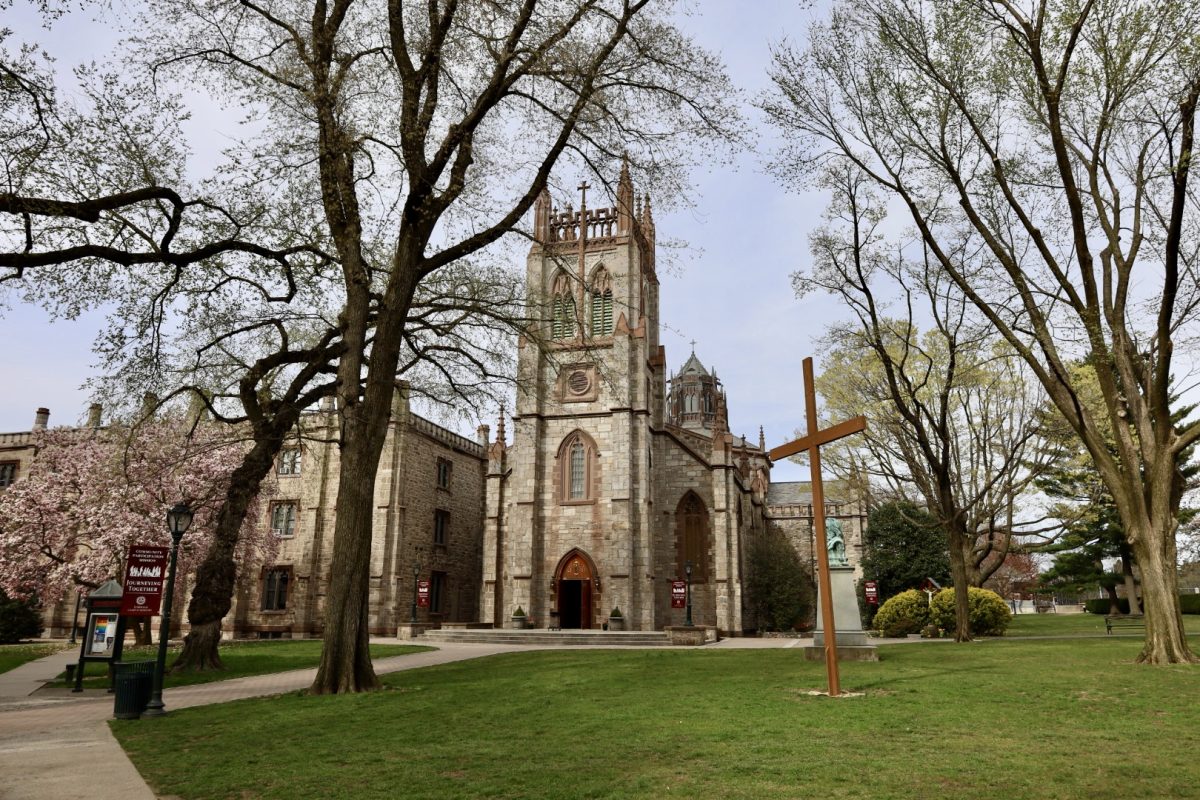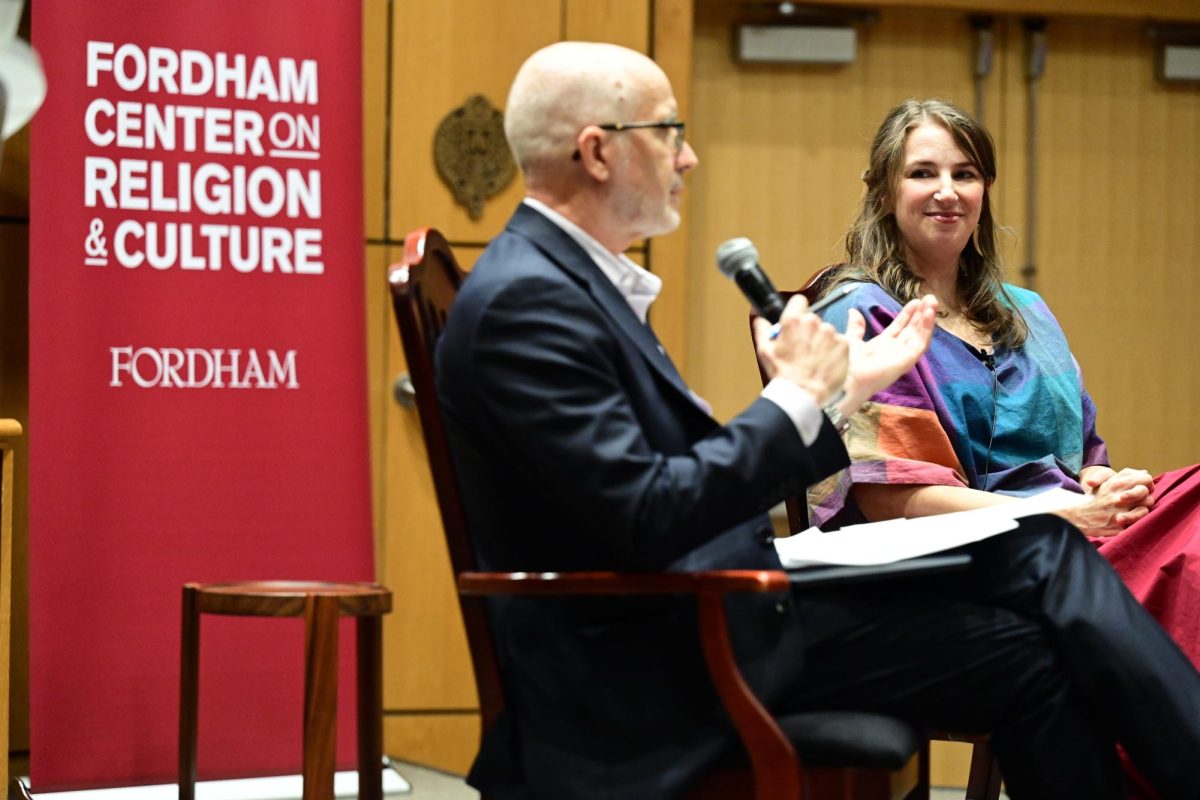An asbestos warning was recently issued for the fifth floor of John Mulcahy Hall (JMH). It was discovered during the preliminary stages of a construction project, as the lab on the floor is due for renovation. A posting in the building identified the dates of removal from Aug. 5-13 and that the asbestos was found in adhesive, caulk and pipe insulation. ACA Environmental Services Inc. was the contractor hired to do the removal.
Previously, asbestos was also found in Cunniffe House in the spring and in Tierney Hall during the summer of 2023. Removal is now complete on Cunniffe and Tierney. Over the summer, giant inflatable rats holding signs with the slogan “Asbestos Kills” popped up outside the gates of campus accompanied by fliers criticizing Fordham’s use of Incinia Contracting Inc. for asbestos removal, which is non-unionized. The rats and fliers were posted by Local 78 of the Laborers’ International Union of North America.
John Puglisi, head of facilities management, explains that checking for asbestos is a fairly routine procedure before working on older buildings.
“It’s a very standard practice that we have on any of our projects and spaces that we haven’t been in for a while… Before we do anything, any type of construction, we always sample a space.”
JMH’s fifth-floor lab is currently undergoing renovation. It was during the summer that asbestos was discovered. Puglisi notes that the harmful material is not in a particularly hazardous area.
“In the next couple of weeks, we’ve got everything identified, as far as the removals go — and that’s tracking since the type of ceiling that we have in there and the asbestos that’s in there is not accessible.”
Fordham is currently in the process of sending the job out to bid by different contractors for asbestos removal.
Fordham has used Incinia Contracting, Inc. for jobs around campus in the past, which drew scrutiny by Local 78. Local 78 has placed the inflatable rats around both Rose Hill and Lincoln Center campuses in the past to criticize Fordham’s use of Incinia, which is non-unionized. According to Puglisi, the union has not contacted facilities directly about these concerns.
Puglisi clarified that while Fordham does not require all construction companies to be unionized, they must pay their workers a living wage in order to be hired.
“We will use a mix [of unionized and non-unionized labor], but we do make sure that where the labor wage standards are not set for non-union work, we do ask to make sure that the wages are, in fact, a livable wage. It’s kind of part of our betting process. We don’t want to leverage underserved populations and make people do work for a lousy wage.”
He also noted that ACA Environmental Services Inc., the contractor hired for JMH, is unionized and that he believes the protesting came from a competitor.
“It’s their right to protest. It’s their right to throw the rat up… Obviously, we don’t encourage that behavior, it can be a bit of a deal breaker. When it comes to the folks that take issue with the way we do business, we may not want to do business with them going forward.”
Roselyn Jose-Ruiz, FCRH ’26, noted that she was unsurprised by the postings of asbestos throughout campus.
“I saw a sign about asbestos at Cunniffe a while ago, but aside from that, I haven’t been aware of any other buildings with asbestos. It honestly makes sense, though, that these buildings have asbestos since this is an old campus with old buildings.”
Asbestos removal is typically a three-day procedure: a day for setup, a day for removal and a day for disposal. However, Puglisi noted that asbestos notices must remain posted for the entirety of the construction job.
“It’s not clear to everybody that the requirements for the posting, they have to stay up until the job is completely finished. Since the asbestos work occurs before any demolition work occurs, by the time you start seeing materials coming out, it’s gone.”
Jose-Ruiz added that she would like increased communication about asbestos beyond the postings.
“I think there should be more announcements about this so that people are at least aware of the situation. It’s one thing to have a sign on the door, but a lot of people are rushing in and out of buildings, so I’m not sure if they’re paying much attention to the notices.”









































































































































































































